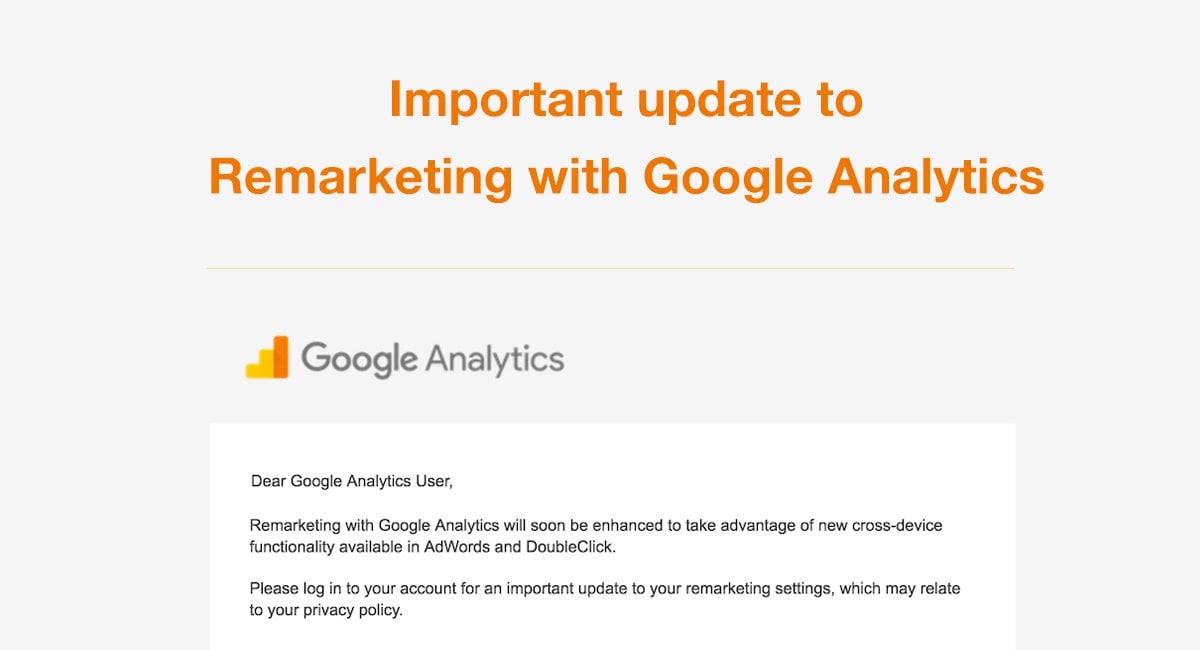The Benefits of Using Remarketing In Google Analytics
Wiki Article
Utilizing Remarketing in Google Analytics: A Comprehensive Guide
Using remarketing in Google Analytics uses organizations a tactical edge in getting to out to prospective consumers. This overview will lose light on the important steps entailed in using the complete capacity of remarketing in Google Analytics, leading to improved advertising end results.Recognizing Remarketing in Google Analytics
Remarketing in Google Analytics allows services to tactically target users who have formerly communicated with their internet site or mobile application. By leveraging data from Google Analytics, services can develop tailored remarketing checklists based upon user habits, such as web pages checked out, actions taken, or certain goals accomplished. This effective tool allows companies to re-engage with users that have actually revealed passion in their solutions or products, inevitably enhancing the chance of conversion.Comprehending the various sorts of remarketing approaches is vital for a successful project - What Is “Remarketing” In Google Analytics?. Google Analytics uses various alternatives, consisting of conventional remarketing, dynamic remarketing, and remarketing checklists for search ads (RLSA) Each kind offers a distinct objective and can be customized to satisfy certain advertising and marketing purposes
Additionally, evaluating the performance of remarketing campaigns is essential for enhancing results. Google Analytics offers important insights right into the efficiency of different remarketing techniques, allowing services to make data-driven decisions and improve their targeting technique. By continuously adjusting and checking remarketing efforts based upon analytics data, businesses can make the most of ROI and drive success in their marketing efforts.
Establishing Remarketing Campaigns

After establishing audience checklists, the following action is to connect Google Analytics with Google Ads. By linking these 2 systems, companies can flawlessly transfer target market checklists from Google Analytics to Google Advertisements for remarketing purposes. This integration allows for more precise targeting and much better project efficiency.
As soon as the accounts are linked, services can produce remarketing projects in Google Ads making use of the target market provides formerly defined in Google Analytics. These projects can be personalized with details advertisement creatives, messaging, and bidding process strategies to successfully re-engage with previous site visitors and drive conversions. By following these steps, services can leverage the power of remarketing to enhance their advertising efforts and boost ROI.
Using Audience Segmentation Methods

Predefined sections in Google Analytics permit you to swiftly evaluate usual audience categories fresh customers, returning individuals, or customers that finished a certain objective on your website. Customized her explanation sectors, on the various other hand, enable you to develop one-of-a-kind segments based on particular standards that are important to your business objectives. Dynamic remarketing lists automatically adjust based on customer habits, showing personalized advertisements to customers that have actually interacted with your website in specific ways.
Analyzing Remarketing Performance Metrics
Upon reviewing the effectiveness of remarketing campaigns in Google Analytics, the analysis of get redirected here essential efficiency metrics gives valuable insights right into audience involvement and conversion rates. By diving into metrics such as click-through prices (CTR), conversion prices, expense per acquisition (CERTIFIED PUBLIC ACCOUNTANT), and return on ad invest (ROAS), online marketers can gauge the success of their remarketing efforts. Evaluating these metrics makes it possible for marketing experts to optimize campaigns, fine-tune target market targeting, and allocate budgets effectively to enhance general remarketing efficiency.Enhancing Remarketing Techniques
When refining remarketing methods in Google Analytics, concentrating on audience segmentation is extremely important for attaining campaign success. By separating your audience right into certain segments based on their habits, demographics, or rate of interests, you can customize your ads better to each team. This targeted approach raises the probability of involving users who have actually currently shown passion in your products or services, bring about higher conversion prices.One more crucial facet of optimizing remarketing approaches is constantly screening and refining your projects (What Is “Remarketing” In Google Analytics?). A/B testing various ad creatives, messaging, or offers can assist you determine what reverberates finest with your target market and drives one of the most conversions. By examining the efficiency of these tests in Google Analytics, you can make data-driven decisions to optimize your remarketing initiatives even more
In addition, leveraging dynamic remarketing can considerably enhance your project results. This function allows you to reveal personalized advertisements to individuals based upon their previous interactions with your web site, showcasing service or products they have actually formerly checked out. click By supplying tailored material to users based on their actions and interests, dynamic remarketing can help boost interaction and drive conversions.
Final Thought
Finally, using remarketing in Google Analytics is a tactical approach to target individuals who have formerly engaged with a web site. By developing personalized target market listings and using audience segmentation techniques, services can optimize remarketing advocate raised conversion rates. Evaluating efficiency metrics and continuously maximizing methods are crucial for making best use of the efficiency of remarketing efforts.Google Analytics offers different choices, consisting of common remarketing, dynamic remarketing, and remarketing checklists for search advertisements (RLSA)After establishing up audience listings, the following step is to link Google Analytics with Google Advertisements. By linking these 2 systems, companies can seamlessly transfer target market checklists from Google Analytics to Google Advertisements for remarketing functions.As soon as the accounts are linked, businesses can develop remarketing projects in Google Ads making use of the target market notes formerly defined in Google Analytics.When refining remarketing techniques in Google Analytics, concentrating on target market segmentation is vital for accomplishing project success.
Report this wiki page